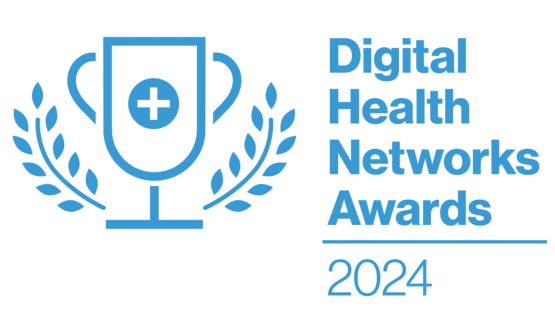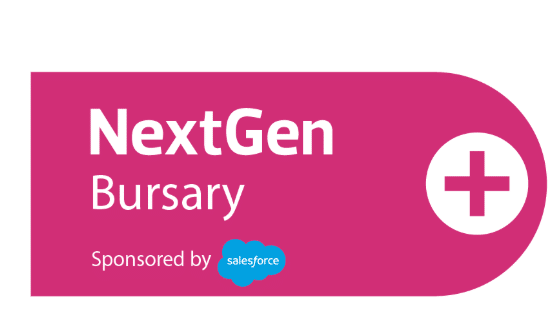Another view: of why GP federations need a CCIO
- 26 July 2016

Earlier this month, I enjoyed attending the CCIO summer school in Leeds. I was pleased to be asked to present a ten minute slot on why GP federations need to appoint a chief clinical information officer.
Just because my life seems to consist of endlessly talking about GP federations at the moment, I can’t assume anyone else knows what they are. For those that don’t know, GP federations are collections of GP practices acting as providers not commissioners.
There are becoming increasingly common and I have helped set-up three. I’ve also worked with a number of others. And I’m co-supervising a PhD student at the University of Liverpool who is investigating GP federations and their development.
We think there are two main types of federation. A type 1 is often an old out-of-hours provider that has branched out into new contracts. This type of federation tends to be quite competitive, often bidding for contracts against existing providers, and may well be for profit.
A type 2 tends to be a not for profit, often – but not always – setup as a community interest company. This type of federation looks more to the delivery of general practice. Its tends to work with its partners not against them.
Of course, this is a model and in real life the way federations are set up and the way they work varies; but we find it useful.
Improving access
We have used the type 2 model in setting up our federations, and set the following four aims for them, which seems to work well:
1 Improve services for patients
2 Harmonise and standardise delivery of care across member practices
3 Improve productivity, cut costs, innovate!
4 Find new income sources – even if this means more work!
The argument I made at the CCIO summer school was that so many of the schemes that our federations are doing to meet these goals involve IT that a federation should have a specialist IT person and a clinician with IT expertise. In our experience, federations don’t tend to think about this.
In my talk, I had about 60 seconds for the slide that listed our projects. So I thought I’d go through some of them and how they involve IT.
A big driver for us is improving access. Two of our federations won £1.9 million in a joint Prime Minister’s Challenge Fund wave 2 bid that we put in for them.
Unlike a lot of areas that won funding this way, we didn’t setup a new hub. Instead, we asked practices to open longer themselves, based on their ability to do this and their demand.
We know a lot of areas that have set up a new out-of-hours hub, either in new or existing premises. They have often bought new kit and had patients from all member practices turning up. Of course, this has large IG and IT implications.
Our system was much simpler; patients would be seen in their own practices by (some of – not all took part) their own GPs.
Of course, to monitor and evaluate all this we needed a lot of Excel spreadsheets. We also built a BI tool called Apex, that I’ve previously mentioned, that is going to be generally released later this year.
It allows us to see pressure points, as it displays capacity and demand. It also allows us to monitor activity as it auto extracts activity data from practice systems overnight and presents them in an enterprise view.
The pros and pitfalls of online booking
We encouraged online booking by insisting that all PMCF appointments were available online. At the summer school, there was one speaker who was very evangelical about online booking.
I largely agree with that philosophy; but you do need to be careful not to waste appointments or deliver poor service. Just throwing open appointments can cause problems.
People book with wrong person. The speaker made a joke about people saying that: “If we put our appointments online, people will use them and we don’t want that” – when “that is what they are for” (laughing).
Wrong. Don’t book with me for a smear, or one of my colleagues for a joint injection. We have 22 GPs at my practice, and while we try to encourage continuity of care, we couldn’t cope if everyone just booked a GP appointment with any of our GPs for anything that they needed.
We have a local minor pharmacy scheme; we now have pharmacists in 14 local practices. We recently setup an instant access brief intervention physio service. There are lots of alternatives to seeing a GP many of which are more appropriate and will get you a better outcome.
Reception delivers an invaluable service trying to triage people and helping to reduce the demand on doctors by getting more people to the right person first time.
We are investigating some of the systems available to do this online. There are a couple and they have some cool features. Pre-taking the history could, in theory, help to speed up consultations. Reacting to trigger words and symptoms and linking to resources such as counselling or other third sector support would be great.
Still a lot going on
We are looking to implement one of these systems; but haven’t chosen yet. What we have done is setup a local research network that is helping generate new income for practices.
We are using Emis enterprise searches and reports to help this find patients. We – and by this I mean our new team of pharmacists – are also using it to build a range of medicines safety searches to help drive up the quality across our federation.
They are also writing a load of Emis protocols to highlight problems and are sharing these around the practices.
To support sharing of information and best practice we have built our GPAsk platform that I’ve also mentioned before – it’s a StackOverlow like Q&A site that allows people to ask their peers or experts questions about any topic (as long as no PID is used).
It now has more than 280 local users and it is surprising how quickly news on it can travel. Meanwhile, a big project that I mentioned last month is actually progressing today, as I type.
We are trying to move a load of our practices onto the Lexacom dictation cloud so that we can, one, gain the benefits of using speech recognition and, two, try and pool our secretarial services.
The idea is that secretaries in any practice should be able to work on any practice’s letters. This will take some time to happen, but I can see a typing pool being set up that works for all of us. Perhaps it is the start of a pooled coding team, perhaps a pooled reception team?
One of our federations is largely on the same phone system. I can’t see why it’s practices can’t answer each other’s phones; creating a massive bank of operators. Of course, some of the individualities mentioned above need to be addressed, but linking this to an online system seems the way forward.
Who is your clinical IT expert?
Another project I mentioned last time is also progressing. We now have 17 practices using the same ECG service, with the aim of standardising and harmonising practice.
In theory, everyone gets the same ECG, reported by the same team, sent electronically and returned into the clinical system. The advance on last month is we have met a company called Medefer that provides online consultations with consultants that our clinical commissioning group has commissioned.
It seems sensible to me to link the difficult ECGs to the consultant referral service and get a full clinical opinion, and we are exploring this.
In summary, I hope you can see that we are busy, that we are trying to meet our four goals and that most of our projects have an IT/IG component. Locally we took on a IT/IG manager; but the role of IT aware clinician is important.
Luckily they have me locally – who do you have and what are you doing?
About the author: Dr Neil Paul is a full time partner at Sandbach GPs; a large (23,000 patient) practice in semi-rural Cheshire. He is also one of the directors of Howbeck Healthcare Ltd, which helps support several GP Federations.
Dr Paul has been involved in primary care IT and health service management for more than ten years in various roles, including PEC member. In his spare time, he writes medical iPhone software and is a keen photographer.




